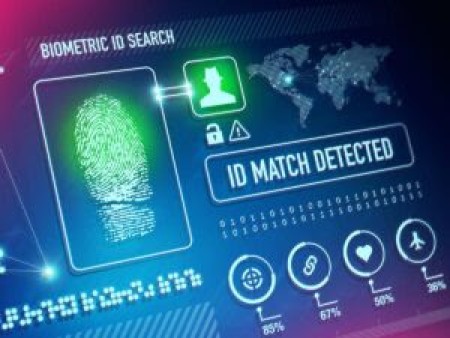WASHINGTON, DC – The United States Customs and Border Protection (CBP) agency says it has completed the expansion of biometric facial comparison technology at all international airports across the United States to further secure and streamline travel from the Caribbean and other places.
 “This innovation effort is a critical milestone for the biometric Entry/Exit program, and complements biometric boarding, which is currently at select departure locations,” said CBP in a statement.
“This innovation effort is a critical milestone for the biometric Entry/Exit program, and complements biometric boarding, which is currently at select departure locations,” said CBP in a statement.
It said the Simplified Arrival is an enhanced international arrival process that uses facial biometrics to automate the manual document checks that are already required for admission into the United States.
“This process provides travelers with a secure, more touchless travel experience, while fulfilling a longstanding Congressional mandate to biometrically record the entry and exit of non-US citizens,” CBP said.
In addition, it said Caribbean and other foreign travelers, who have visited the United States previously, may no longer need to provide fingerprints, as their identity will be confirmed through the touchless facial biometric process.
“I am very proud that CBP accomplished this critical milestone to deploy facial biometrics at entry at all US airports and continues to play a significant role in the travel recovery efforts,” said Diane J. Sabatino, deputy executive assistant commissioner, Office of Field Operations, CBP. “The use of facial biometrics for identity verification brings travelers one step closer to a truly touchless process that is secure and streamlines travel, while protecting their privacy and enhancing the customer experience.”
CBP said it and its stakeholder partners have been expanding the use of facial biometrics through public/partnerships “to further secure and streamline travel well before the COVID-19 pandemic to meet the biometric exit mandate while supporting air travel modernization efforts.”
Given the need for safe and touchless processes in air travel, CBP said it expedited the expansion of Simplified Arrival “to provide travelers the benefits of secure, touchless technology, which became even more critical during the pandemic.”
CBP said the biometric facial comparison process occurs only at a time and place where travelers are already required by law to verify their identity by presenting a travel document.
When a traveler arrives at an international airport, CBP said he or she will pause for a photo at the primary inspection point.
CBP said a CBP officer will review and query the travel document, which will retrieve the traveler’s passport or visa photo from government holdings and compare it to the new photo.
“This enhanced process using facial biometrics only takes a few seconds and is more than 98 percent accurate,” CBP assured, stating that it is committed to its privacy obligations and has taken steps to safeguard the privacy of all travelers.
“CBP has employed strong technical security safeguards and has limited the amount of personally identifiable information used in the facial biometric process,” the statement added.
It said new photos of US citizens will be deleted within 12 hours, and that photos of most Caribbean and other foreign nationals will be stored in a secure Department of Homeland Security system.
CBP said US travelers and Caribbean and other foreign nationals, who are not required to provide biometrics and wish to opt out of the new biometric process, can simply notify a CBP officer as they approach the primary inspection point.
“These travelers will be required to present a valid travel document for inspection by a CBP officer and will be processed, consistent with existing requirements for admission into the United States,” CBP said.
It said Simplified Arrival pairs one of the industry’s highest ranked facial comparison algorithms, as assessed by the US National Institute of Standards and Technology, with trained CBP officers who are skilled at verifying the authenticity of travel documents.
CBP said if a traveler cannot be matched to a photo on record using the Simplified Arrival process, the traveler will proceed through the traditional inspection process, consistent with existing requirements for admission into the United States.
To date, more than 171 million travelers have participated in the biometric facial comparison process at air, land and seaports of entry, CBP said.
Since September 2018, CBP said it has leveraged facial biometrics to prevent more than 1,450 imposters from illegally entering the United States by using genuine travel documents that were issued to other people.
CBP is the unified border agency, within the US Department of Homeland Security, charged with the management, control and protection of America’s borders at and between official ports of entry.


